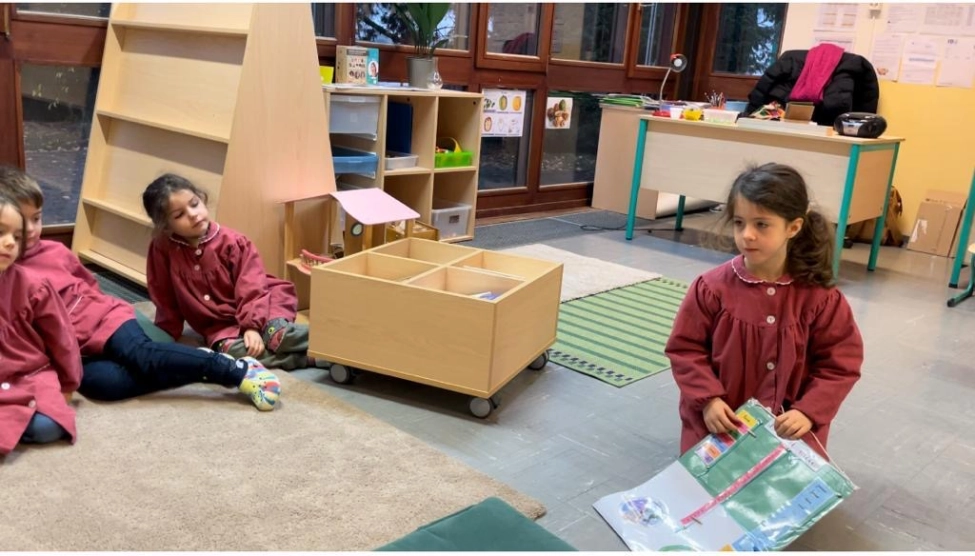
KINDERGARTEN - Higher Section (2P)(from 5 to 6 years old)
Grande Section is the second year of the first primary cycle. During this pivotal year, the teacher will accompany the student in the consolidation of his or her knowledge.
Interaction between children and the consideration of the other's point of view, with the aim of becoming part of a learning community, is encouraged. Students develop their ability to interact through projects, in order to achieve productions adapted to their possibilities. Awakening and psychomotricity activities are offered to students in the afternoon.
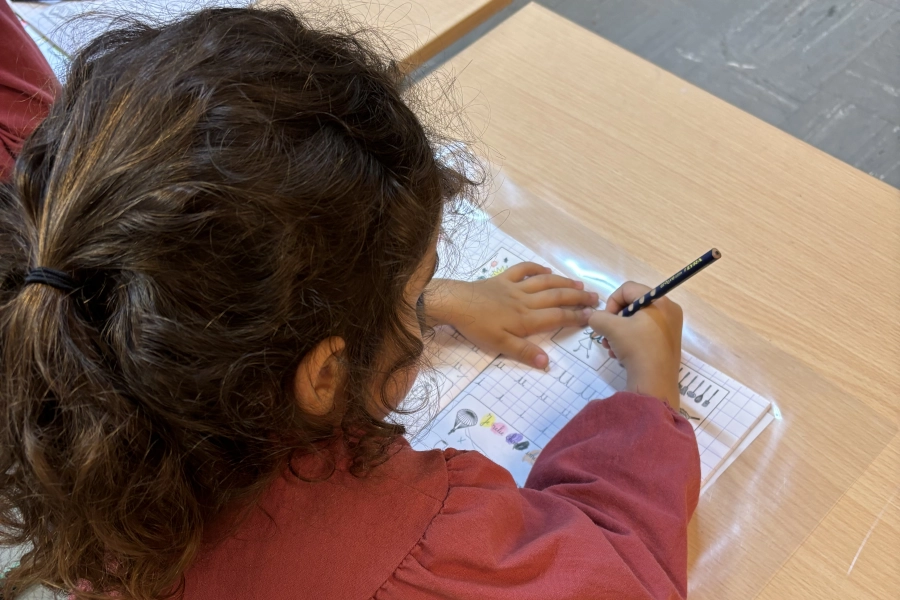
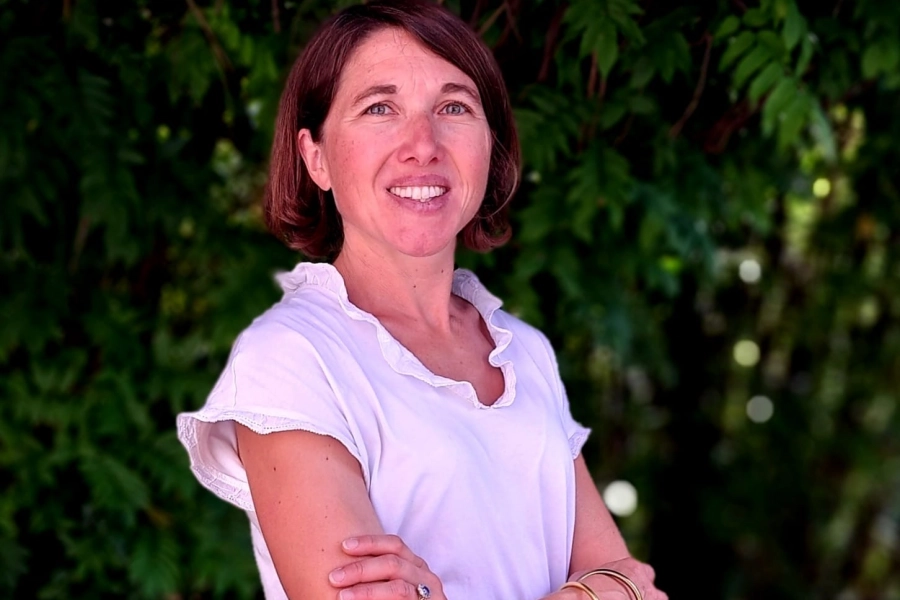
The pedagogy is based on several points:
- The need to act, allowing for the richness of the students' experiences. The students practice independently, act on reality, develop their imagination, practice motor skills and experiment with various rules and social roles.
- Learning by solving concrete problems. In order to provoke the child's reflection, the setting up of problems within their reach is encouraged. Great attention is paid to the child's progress.
- A pedagogical choice that takes into account the pre-requisites/acquisites of the students. Their stabilisation requires numerous repetitions in varied conditions.
- Students learn by remembering and memorising concepts. Engaging in an activity in the classroom is an opportunity to recall knowledge that can be built upon, to relate it to different situations encountered or similar problems posed.
- The satisfaction of having overcome the difficulties experienced.
- The development of the child in the face of learning.
- Afterwards, the children complete a workbook from the butterfly collection in order to confirm the new notion acquired.
Targeted competencies
Mobilise language in all its dimensions, both oral and written
Enrich vocabulary, improve graphic and logical skills to acquire the mechanisms necessary for learning to read.
Mobilise their learning in order to distinguish the sounds of the language, the graphic signs.
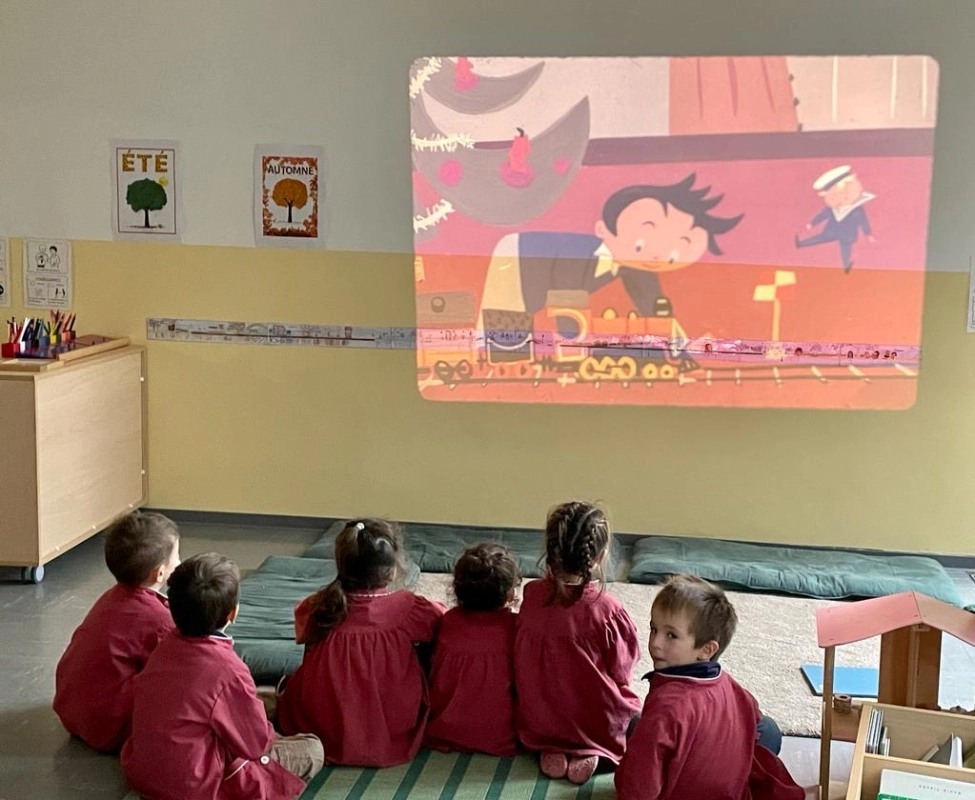
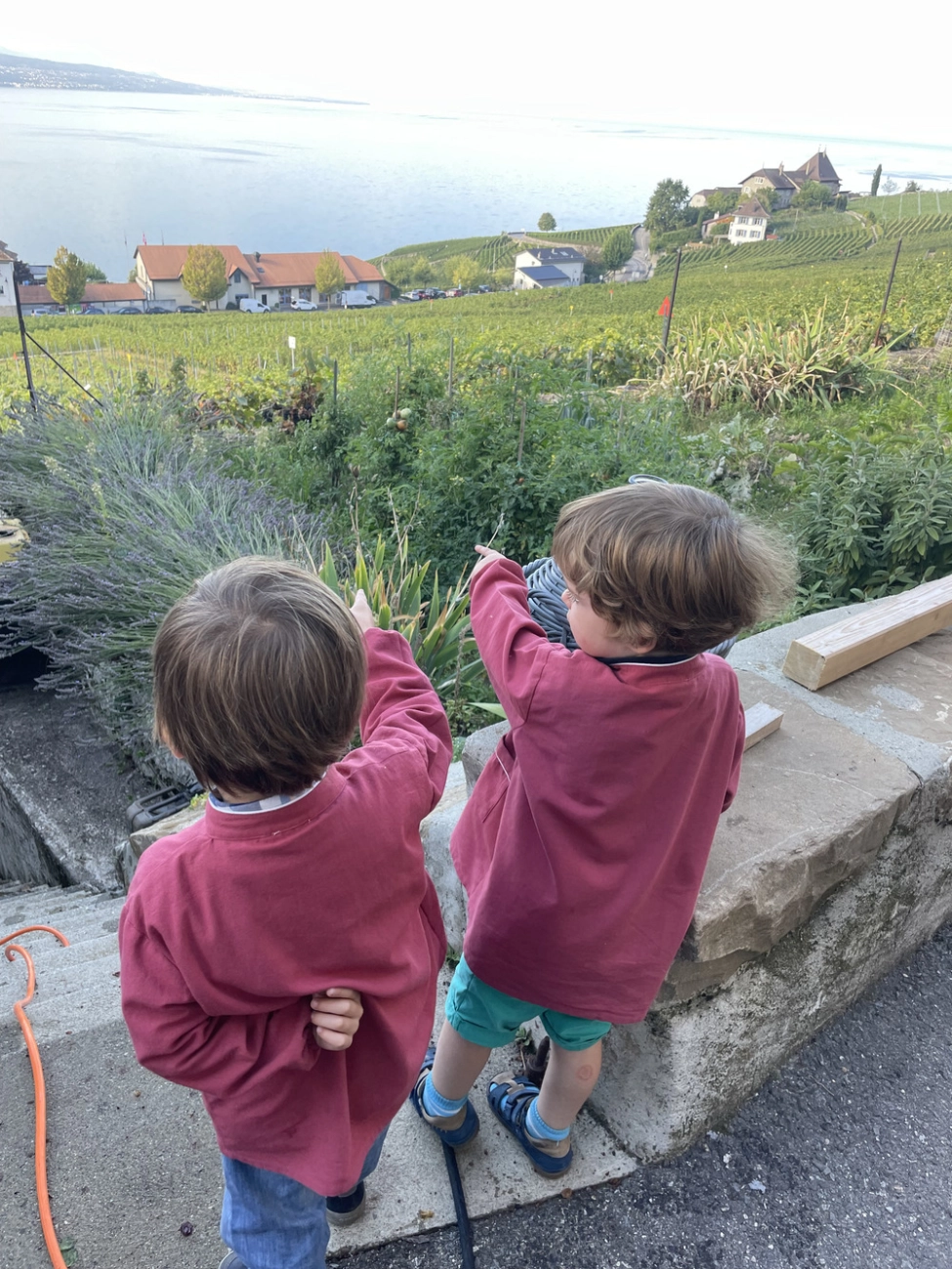
Spoken
- Spontaneously acquire language through interaction with peers and adults. In class, increased attention is paid to the acquisition of a rich, organised and understandable spoken language. During the various group moments when the floor is open, the student will be able to participate in a relevant exchange on a subject. He/she will be able to express their agreement or disagreement, add to the discussion, and ask questions of their classmates.
- Enrich their lexical baggage. Through the readings and discovery activities proposed, the student will gradually enrich their vocabulary. Picture cards will be displayed in class so that the words will not be forgotten. A reminder of the new vocabulary will be given during the welcoming period.
- Using games, simple and complex instructions, children's books, and classroom situations, the student is guided in the production of simple sentences. They are encouraged to use different sentence structures.
- From the first primary cycle, the student begins to reflect on language and the teacher accompanies him/her in the acquisition of a phonological awareness.
- At the beginning of Kindergarten, the student begins to identify a sound in a word. For example: "How many times can I hear the A in pineapple"?
In writing
Through the readings offered, the student listens to what is written while representing the situation. At the beginning of the year, students will have a shorter reading and as the year progresses, a progression will be made in the type (recipe, album, game rules) and length of the text. The student must realise that it is not always necessary to write as one speaks.
Thanks to the Papillons writing book, while continuing with graphics, the student is led to trace the letters on different supports. After discovering the letter and the sound, the student traces the letter in space and then follows a rough letter with each hand, once with eyes open and once with eyes closed. Then the letter is traced in the air, in the sand, in the semolina, in the coffee beans and then in the back of his friend.
Through the progression of the visual gesture, the student is gradually led to trace their first letters in the writing book. They must know how to hold his/her pencil correctly by exerting the right pressure.
The student also learns to recognise and associate capital letters, cursive letters and scripts.
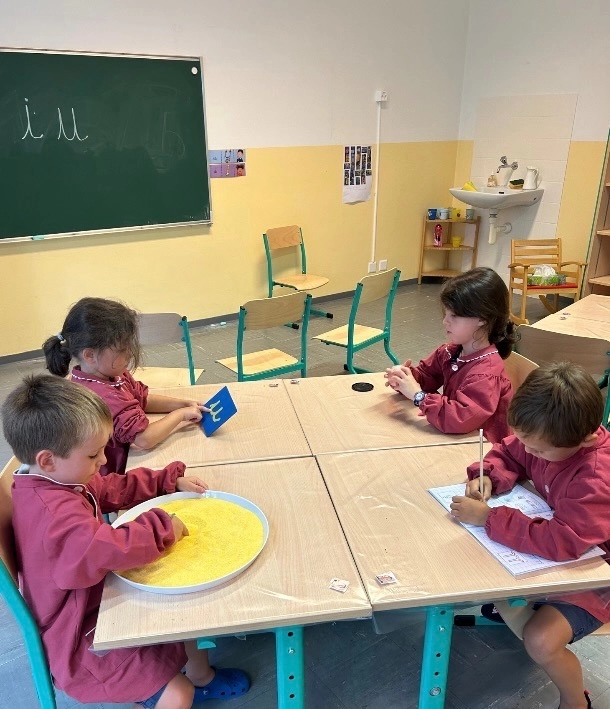
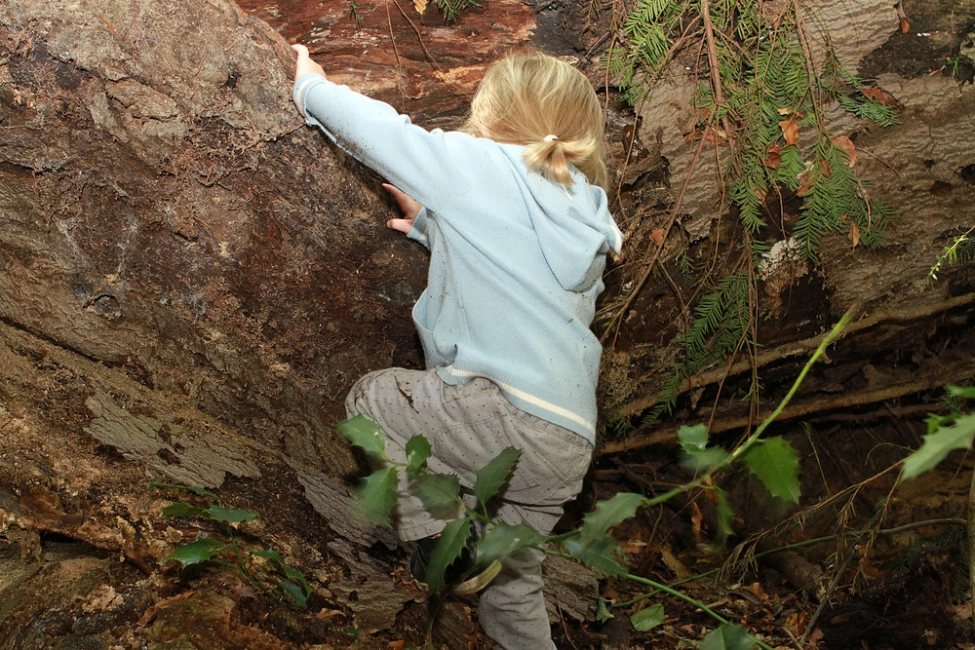
Act, express themselves, understand through physical activity
Every day, the students have psychomotricity sessions.
The physical education classes given each week give the students a taste for effort and team spirit.
Acting, expressing oneself, understanding through artistic activities
Artistic activities have two dimensions: visual arts and sound arts.
- Each day, students are invited to carry out practical work. The artistic activities proposed allow the students to experience and express the emotions they feel.
- In the classroom, a craft corner will be made available to students during their free time and before prayer so that they can freely explore different types of tools and media.
- Each period, cultural outings will be organised in connection with the theme covered in class. These outings will allow students to compare different works, to differentiate points of view, to question and to develop a critical eye.
- During the art sessions, students will work on different shapes, volumes and colours with different materials such as wood found in the park, leaves, stones but also newspaper, sand, etc.
- Singing sessions will be offered to the students in accordance with the theatre. Thus, the students will be able to acquire a repertoire of rhymes and poems while developing their sensitivity, discrimination and auditory memory.
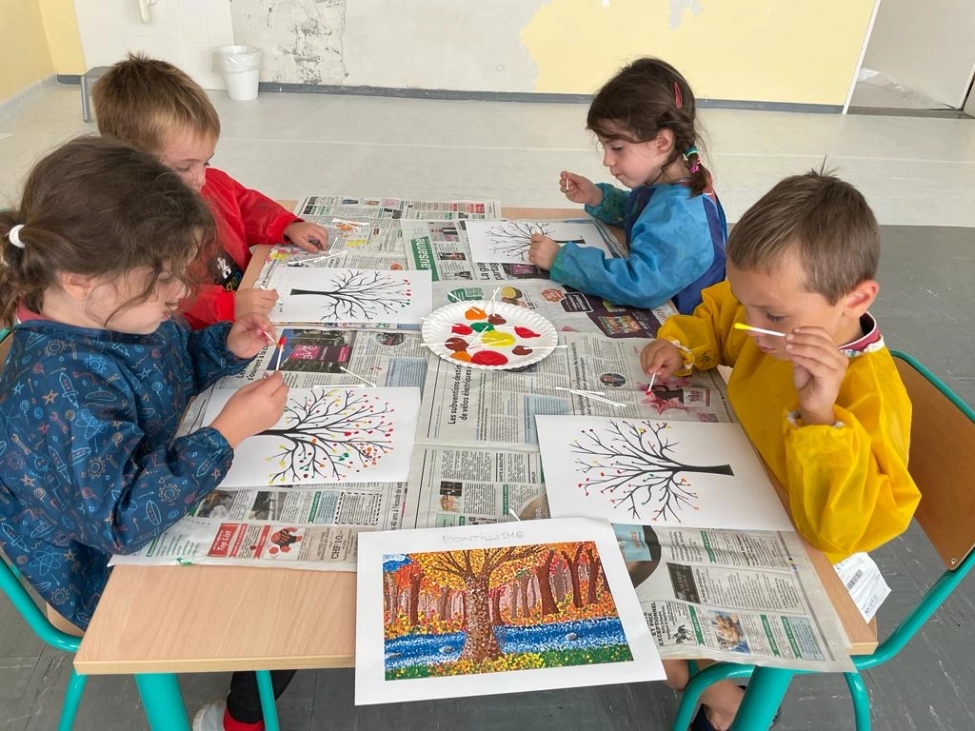
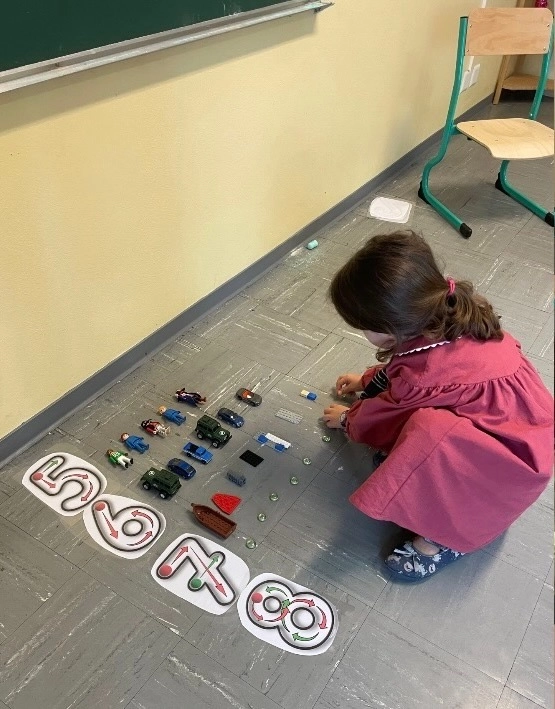
Acquire the first mathematical tools
- In numbering, students will be able to recite at least the sequence of numbers up to 30. Of course, each student will benefit from a personalised follow-up that will help them progress at their own pace.
- Before each exercise in the workbook, activities will be proposed to the students in order to manipulate and understand by different methods and notably with Montessori material such as cubes (unit) and bars (ten).
- Students will also have abacuses that will be freely available to them.
- Students will be able to add and subtract quantities from a collection, manipulate tens, solve simple problems, compare collections, and use different mathematical signs such as > < + - , recite and manipulate doubles, halves and quarters.
- Students will also be challenged to identify a regular organisation and pursue its application.
Exploring the World
- Awakening to temporality: through the date, the time of day, the seasons and the calendar in the classroom, students will stabilise their temporal references.
- Awakening to nature: the afternoons are devoted to activities, essentially to the discovery and knowledge of natural elements in their environment. They learn to recognise, name and use these elements to stimulate their desire for knowledge.
Awakening to the faith: Each morning, the students are invited to a daily gathering around the liturgical calendar. These times together encourage recollection and a sense of belonging.
